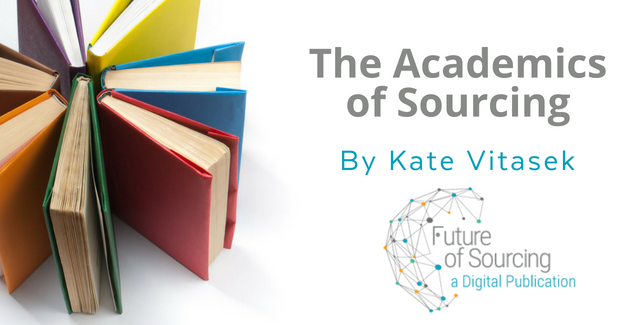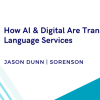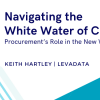As the outsourcing market has matured over the last 15 years, many service providers have developed capabilities that go beyond the original scope of delivery to their customers. New business models have evolved to create mutually beneficial relationships, increasing cost savings for the buyer and increasing margins for the provider. But all too often companies that have outsourced proclaim their relationship is stale and lacks innovation – it’s the Outsourcing Conundrum.
Let’s look at a classic example we have seen repeated many times
OUT company has been providing outsource services to MFG company since 2007. When the initial project was launched, each had high expectations that the relationship would become bigger and better for both companies. MFG had a vision to leverage the OUT company’s capabilities across multiple divisions, saving the company millions of dollars while maintaining quality and service levels. OUT had visions of the MFG account growing into a highly profitable marquis account.
By 2012 the relationship became stale. Even though OUT was achieving a “green” scorecard and meeting service level agreements (SLAs), neither side could move strategically towards the vision expected from their strategic outsourcing relationship.
The story of MFG and OUT is repeated every year in hundreds of outsourcing relationships. Visions of grandeur in a strategic outsourcing relationship are checked at the door during the first round of contract negotiations. Buyers focus on their bottom line by driving costs down. Service providers hunker down to deliver on the promise of the green scorecard at the pre-negotiated price. Neither side invests in the strategic relationship. Neither side advances their business models and margins.
Why have outsourcing relationships fallen in this rut? How can they get out of it?
These are questions University of Tennessee researchers have studied since 2005. The findings? Too often the relationships and frontline organisational models have lagged, preventing companies and their service providers from maximising value. Neither buyers nor providers are stepping back to rethink their relationship and find the roadmap to success. Both are unhappy, but are too entrenched to revisit their strategic vision for outsourcing and develop a roadmap for success.
The Roadmap: Business Model Mapping Framework
The good news today is that the roadmap to success is becoming clearer. The University of Tennessee’s research points the way for companies to view their outsourcing relationships through a new lens and business model. A recent white paper by UT and the Sourcing Interests Group, ‘Unpacking Sourcing Business Models’, offers insights for providers and buyers to learn the differences between the various sourcing business models and determine if “moving up” the framework is the right approach.
From this research three distinct business model categories emerged: Transaction Based, Outcome Based, and Investment Based. These models are further broken down by their level of maturity to identify the sourcing relationship, ranging from simple transaction provider to equity partner (see below).
UT’s work has led to four books on the topic of what researchers call Vested Outsourcing: a structured approach for creating highly strategic outcome-based agreements between buyers and suppliers. The research has shown companies that embark on a Vested approach are able to achieve breakthrough results spawned by hyper-collaboration and the desire to invest in innovation in the strategic partnership. Moving up the business model framework provides mutual benefit for providers and buyers in terms of revenues, cost savings, quality, consistency and most importantly, margin improvement. The research proves that companies executing a relationship-based strategy succeed at faster rates than their competition. The latest book on the Vested topic, Vested: How P&G, McDonald’s and Microsoft are Redefining Winning in Business Relationships, shows the Vested approach is not just a nice theory, but has the ability to deliver real, transformational results.
But just how does a service provider work with buyers to achieve this Holy Grail? Sean Geehan, CEO and Founder of the Geehan Group, outlines a roadmap for success in his book, The B2B Executive Playbook.
The answer lies in service providers consciously creating a path to a Vested relationship. To achieve the path to success, providers and buyers need to think more creatively, become receptive to ideas and open to new ways of doing business. The good news: it is possible. The bad news is that moving outsourcing relationships up the business model framework often takes much more time, effort and energy than initially envisioned. Changes in scope, resources and business environments create obstacles to make the upstream trek seem like an upstream fight against a raging snowmelt river in the Colorado canyons.
Let’s explore the path to success…
Laying the Foundation: Understanding the B2B Relationship Continuum
Geehan outlines five distinct categories in the B2B Relationship Continuum in The B2B Executive Playbook. The continuum begins with a commodity supplier and moves to a business partner (see below).
The ability for a provider to sell or collaborate on more partnership-oriented programs is dependent on where they are perceived in the relationship continuum, and the level of business relationships they have within the organisation.
The first step along the journey is to build a foundation of trust. A mutual trust-based relationship is needed to achieve more advanced business model engagements. Today most provider firms have some program or approach they are attempting to implement that will drive business-leader-level relationships to become more “trusted”. In many cases providers focus on one-to-one account-based selling and delivery models to focus more closely on the customer. These models have had positive success for many organisations, especially those who have experienced delivery issues and who are looking to provide more of their outsourcing services to other parts of the organisation.
But moving up the business model continuum to gain trust with the customer’s top “C-level” leaders requires more than the frontline being organised to solve delivery issues and prove value. Today, successful outsourcers are finding that organisational commitment to the relationship must go beyond the sales team. The provider’s C-level must also become a key component in the relationship with top clients.
Providers must prove themselves at each level to earn their way up the continuum towards a more trusted status. The more trusted status allows a provider to position their brand and company as capable of delivering greater levels and amounts of services, ultimately earning more business.
Understanding the Perception Deficit Dilemma
An insight uncovered in B2B relationships is that most providers often measure their relationship at a level that doesn’t align with the future business model or level of services they’re intended to deliver. There are three distinct relationship levels in the B2B world, and the B2B provider must be careful to focus on building trust with the level capable of advancing to the next business model (see below).
A “perception deficit” exists when the C-level in the buyer organisation perceives the relationship at a lower level than the operational vice president leader. This perception deficit means the provider cannot move up the business model continuum until it becomes more relevant to the C-level leader and consequently improves how it is perceived.
Unfortunately, the B2B world is rife with complexities in relationships. But a simple way to break it down is to consider three distinct levels of relationships: Staff/Managers responsible for managing the service level agreements; VPs/Directors who take responsibility for the programs under contract; and CXOs, who are concerned with developing strategies to deliver ROI and shareholder value.
“Has this happened to you?”
Provider X has a “trusted advisor” relationship with the vice president of finance (operational leader) who has responsibilities for their contract and services. Provider X presents an idea to the vice president. The idea will help the organisation cut costs and advance its operations in the supply chain operations of the company. The vice president is excited and provides an introduction to her COO, two layers above her. The COO has a perception that Provider X effectively delivers under their current contract and considers Provider X a “reliable supplier”. The COO is pleasantly surprised to hear of the supply chain idea and immediately asks the vice president of logistics to look into the idea. Within three months an RFP is issued to three separate vendors. Provider X is one of the finalists, but ultimately loses to a company the COO perceives to be more strategic. When Provider X asks why they didn’t win the contract, the response is that “we like your approach and capabilities, but in the eyes of the COO, the other vendor was more qualified”.
The problem that exists is that the perception of the business leaders (the COO) often takes precedence over the perception of operational leaders (the vice president of finance). Outsourcing firms often have great barriers to overcome to effectively build relationships with business leaders occupying the C-suite and board rooms. Not only must the provider possess business and industry knowledge, but it must overcome other barriers that can include cultural, generational and language differences to mention a few.
Overcoming these barriers, and forging business relationships at a senior level in an organisation, allows the provider to move up the business model framework to achieve the investment-based-level relationship referred to as the Vested Relationship.
The Path to Success
Most contracts for outsourced services begin at the procurement and operational level within an organisation. For providers to achieve their goals of increasing revenues the buyer must view the provider as a trusted advisor or business partner. Moving up to a more strategic and ultimately Vested relationship by the provider requires both moving up the B2B Relationship Level and over on the B2B Relationship Continuum (see below).

Moving higher on the relationship level requires the provider to be increasingly business-savvy and have broader business perspectives than simply the work under contract. The provider must navigate through the corporate hierarchy by engaging with more senior leaders. With each encounter and interaction, the provider must prove it understands the buyer’s business, offering insights in a peer-to-peer relationship capacity.
Moving to the right on the Relationship Continuum (see above) means that the provider not only understands the buyer’s business, but has the wherewithal, insights and capabilities to deliver increasingly dynamic and complex solutions to the buyer’s problems and visions for the future.
Investment in the relationship creates a Vested relationship, and the rewards are significant. As the organisations align on business goals, joint teams identify areas for cost savings that will benefit the buyer. At the same time, efficiencies in the outsourced process increase the margins of the provider. As both organisations increase their operating margins, the investment in the relationship pays off with the benefits of a Vested relationship.
The Vested relationship journey undoubtedly takes time to navigate. But some organisations, such as India’s high-tech outsourcing firm HCL, have moved towards the Vested relationship at a faster pace than others; they have been rewarded quite handsomely in terms of revenue growth. Earning the way to the Vested relationship requires commitment and a programmatic approach to engaging with business leaders in meaningful working relationships.
Shami Khorana, President of HCL America, comments: “This platform allowed us an exchange of ideas with true decision-makers from our major clients to gain ‘collective feedback’. This has ultimately contributed to our sales growth and the value of the services we provide.”
For buyers, providing access to senior-level decision-makers and having your providers participate in strategy-planning sessions will help you to identify innovative ideas and align strategies with partners that can deliver to future needs more consistently and cost-effectively.
Increasing the Relationship Decreases Business Risks
So what if we decide we like it where we are in the relationship and decide the status quo is OK? Why not continue doing business as usual forever?
The outsourcing relationship is like a marriage. The more time invested together, the bigger the loss that is realised if the relationship fails. If a loss of appreciation for each other or the zest for visioning the future stalls, the likelihood for a divorce increases.
When the outsourcing relationship is elevating towards a shared vision the risks of relationship failure actually decrease.
In situations where the provider is perceived as a reliable supplier or less, the provider becomes tired of mundane delivery and continued cost and margin pressures it faces. The provider’s team can’t meet the profit margins demanded so they look to cut corners. Quality goes down as lower-cost alternatives are substituted to improve profitability. The buyer has now put its operation at risk with the lower quality, and the inevitable decrease in performance levels only mean that replacement is just around the corner.
For those relationships that haven’t moved beyond the “problem-solver” level, organisational change and business change risks persist – on both sides of the relationship fence. For instance, when an organisational change occurs, both parties must work extra-hard to build new working relationships and re-establish the past level of trust. The best recipe for prevention of future issues, and ultimately a failed relationship, is to forge deeper and wider relationships on each side of the outsourcing fence.
Summary
Transforming the buyer/provider relationship from stalled normalcy to the development of mutually beneficial growth is achievable. Investing in relationships will create a Vested relationship. Vested relationships by their nature offer the best mutual opportunity for increased operating margins with the risk and reward payoff. While entering into a Vested relationship can be a high-risk proposition at the outset, it becomes one of the least risky relationships in terms of chances to fail. Why? Unwinding a Vested relationship is a significant, time-consuming and costly situation, and thus occurs very infrequently.
Outsourced business relationships are dynamic. Moving business models from transaction-based to outcome-based to investment-based requires continual improvements in the delivery of services, building of relationships and improving perceptions of the working relationship. Those providers that take the programmatic approach to foster relationships and continually prove value will see growth and business model evolution at a pace faster than the industry. Those buyers who continually foster innovation and collaboration with their providers have the opportunity to gain competitive advantage by implementing new ideas ahead of competitors. The parties create a win-win situation when they continually work together to foster change and innovation, identify new opportunities and create better synergies to drive mutual growth and mutual benefit.









